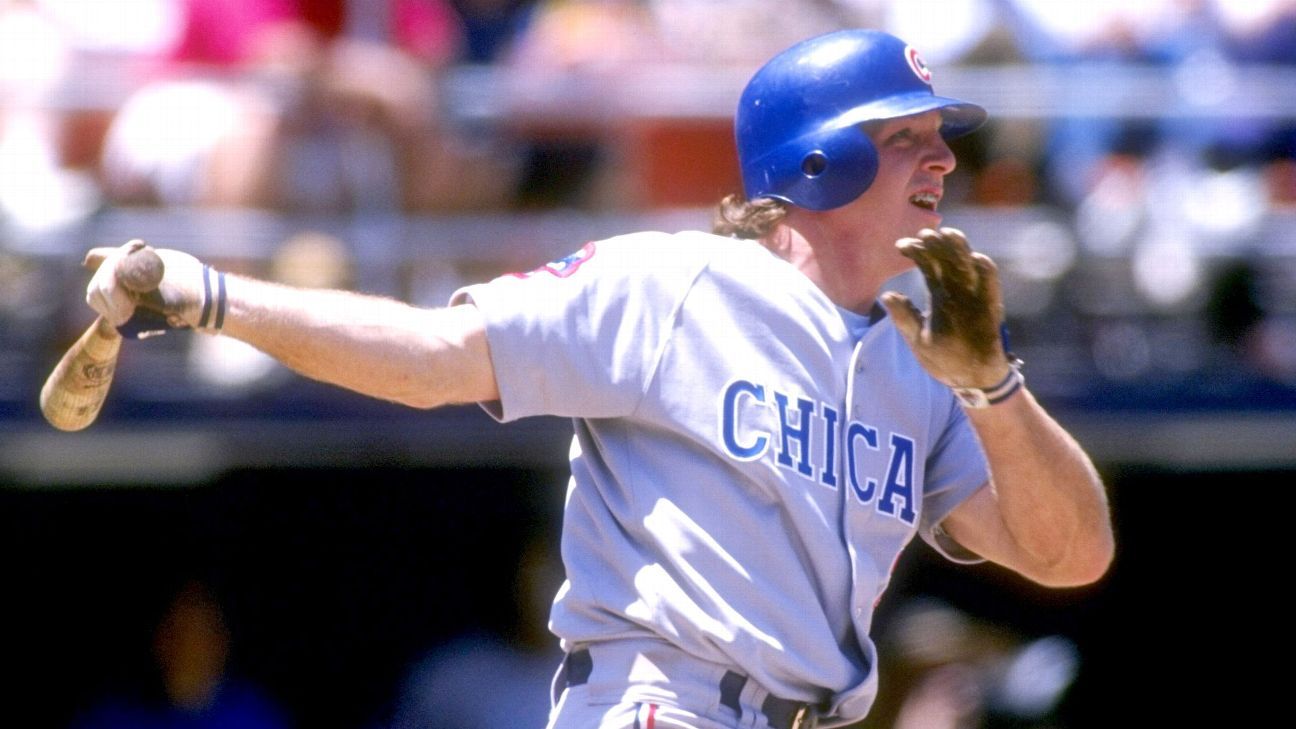One of the beautiful aspects about Major League Baseball: Great seasons can come from nowhere. The line between great and mediocre is smaller in baseball than other sports. A few extra strikes a game. A couple of extra swing-and-misses. A few more hits each month or a couple extra home runs and you’re an All-Star instead of a bench player. Some years, however, it all comes together and a non-star can become a star, six magical months where they might hit like Bench or pitch like Maddux.
These are some of those seasons — starting with one from each National League team. We’ll hit the American League on Tuesday.
Jump to …
NL East | NL Central | NL West
NL East
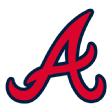 Atlanta Braves: Buzz Capra (1974)
Atlanta Braves: Buzz Capra (1974)
Stats: 16-8, 2.28 ERA, 217 IP, 137 SO, 5.4 WAR
As I kid, I remember seeing this odd name of a pitcher I had never heard of who had once led the National League in ERA. What happened to him? Years later, he still stands as one of the most unlikely ERA champions of all time. Was it just a fluke season? Maybe, but an injury clouds what might have happened next. Capra had pitched 24 games for the Mets in 1973, all in relief. He was a small right-hander (5-foot-10) who apparently threw sidearm, as a 1974 note in Sports Illustrated reads, “he dips so low off the mound that he seems to deliver the ball from the vicinity of his kneecaps.”
Anyway, the Braves, desperate for pitching help, purchased him late in spring training of 1974 for $25,000. A 2016 profile in the Atlanta Journal-Constitution said he immediately went into the rotation, but that’s not accurate. His first 11 appearances came in relief — suggesting the Braves didn’t really know what they had — indeed, nothing in his track record suggested greatness. Capra got a chance to start after pitching six scoreless innings in a relief outing in mid-May and proceeded to go 9-0 in his first 10 starts with a 0.96 ERA. A 10-inning, 1-0 shutout over the powerful Reds capped that run and earned him a spot on the All-Star team.
Capra says he first felt pain at the end of that ’74 season, although he finished strong, throwing 35⅔ innings over his final four starts, including another complete-game win over the Reds to end the season.
“I tried to pitch through the pain in ’75 and won my first few starts but there came a time where I couldn’t even raise my arm,” he told the AJC. “My biceps tendon was stuck to my humerus bone and they had to do a transplant. I worked my tail off to get back out there but it was never the same after that first surgery.
Capra pitched through 1977 and later spent 20 years as a coach in the minors.
 Miami Marlins: Chris Coghlan (2009)
Miami Marlins: Chris Coghlan (2009)
Stats: .321/.390/.460, 9 HRs, 47 RBIs, 1.1 WAR
The history of Rookie of the Year winners is a checkered one: Winners include inner-circle Hall of Famers such as Willie Mays, Frank Robinson and Cal Ripken and future Hall of Famers like Albert Pujols and Mike Trout, but also one-year wonders like Joe Charboneau, Bob Hamelin and Angel Berroa. Coghlan won top rookie honors over J.A. Happ (12-4, 2.93 ERA) and Andrew McCutchen (.836 OPS, 2.4 WAR). He hit well, although fielded terribly, but even a decade ago that .321 batting average was enough to convince the voters.
Anyway, for whatever reason, Coghlan stopped hitting for the Marlins after posting that .850 OPS as a rookie. Over the next four seasons he had a .659 OPS and the Marlins finally gave up on him. He did rebound with a couple decent seasons with the Cubs in 2014-15 and was a bench player on the 2016 World Series champs. Still, his glove was always an issue and his career WAR ended up 0.2.
 New York Mets: Bernard Gilkey (1996)
New York Mets: Bernard Gilkey (1996)
Stats: .317/.393/.562, 30 HRs, 117 RBIs, 8.1 WAR
OK, this one is maybe a little unfair. Gilkey twice hit .300 with the Cardinals and was a regular for five seasons in the majors. But he had nothing close to another season like this one. His second-highest home run total in any year was 18. His second-highest RBI total was 78. His second-highest WAR was 4.5, which is good, but isn’t close to 8.1 — which is an MVP-level season (he ranked second among NL position players that year behind some guy named Bonds). Gilkey played two more seasons with the Mets and was worth a combined 2.2 WAR. His 8.1 WAR ranks as the third-highest total for a position player in Mets history, yet when you talk about great seasons in Mets history, nobody ever brings up Gilkey.
Here’s the amazing thing about that 1996 Mets team. That was also Lance Johnson’s career season, when he hit .333 with 227 hits, 21 triples and 117 runs. He was worth 7.2 WAR — fifth on the Mets’ single-season list. Catcher Todd Hundley set a franchise record with 41 home runs — broken only this past year by Pete Alonso. That’s a pretty strong trio to build around. The Mets still lost 91 games.
 Philadelphia Phillies: Jim Konstanty (1950)
Philadelphia Phillies: Jim Konstanty (1950)
Stats: 16-7, 2.66 ERA, 22 saves, 152 IP, 56 SO, 4.5 WAR
Based on career WAR, Konstanty is the least accomplished player to win an MVP award. He finished with just 11.8 WAR, so 38% of that came in his one magical season. He’s certainly the most obscure MVP winner, a bespectacled relief pitcher from a long time ago. All that simplifies what was a remarkable season. For one thing, he was a 33-year-old journeyman with just 234 career innings entering the season. This would be like, oh, I don’t know, Oliver Drake winning MVP honors in 2020.
But Konstanty’s rise to MVP is even stranger. He lettered in four sports at Syracuse, playing mostly third base and first base on the baseball team. After graduation, he taught high physical education and played semipro ball, where the manager of the Syracuse team in the International League saw him and signed him — for $0. His professional career thus began at age 24. He reached the majors with the Reds in 1944 during World War II, joined the Navy in 1945 and spent most of 1946 and all of 1947 in the minors. He eventually found his way to the Phillies. In the days before true relief aces, all of Konstanty’s 74 appearances in 1950 came in relief (although he would start a game in the World Series). The Whiz Kids were surprise winners of the NL pennant — the Phillies’ first since 1915. Konstanty was a classic junkballer, throwing a slider, palmball and screwball. He received 18 of the 24 first-place votes to beat out Stan Musial, who hit .346 with 109 RBIs, for MVP honors.
You know what though? It’s actually not THAT silly of a selection. While his WAR wasn’t as high as Musial’s (7.3) or even teammate Robin Roberts’ (6.9), the win-loss record, saves and ERA show that Konstanty was excellent in the clutch. Baseball-Reference’s Win Probability Added has him tied with Roberts at 5.4 for best among pitchers. Musial was at 5.8, but the Cardinals also finished in fifth place, 12½ games behind the Phillies. Although the writers didn’t have these advanced metrics at their disposal back then, they did correctly surmise that Konstanty was a key reason the Phillies won the pennant.
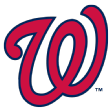 Washington Nationals: Mike Morse (2011)
Washington Nationals: Mike Morse (2011)
Stats: .303/.360/.550, 31 HRs, 95 RBIs, 3.4 WAR
Nicknamed “The Beast,” Morse was an imposing 6-foot-5 and 245 pounds and was undoubtedly the largest human ever to play shortstop in the majors. He started 49 games there in his career, and let’s just say he wasn’t much of a shortstop. To be fair, he also wasn’t much of an outfielder or first baseman. The Beast cobbled together parts of 13 seasons in the majors, although he qualified for the batting title in just this one season and played 100 games just three times.
Despite all that time in the majors he earned just 4.0 WAR in his career, most of that coming in 2011, when he split time between first base and left field and ranked fourth in the NL in slugging percentage, ninth in home runs and 10th in RBIs. He began the season in a platoon in left with Laynce Nix, but then took over at first base when Adam LaRoche had shoulder surgery.
Morse might be most famous, however, for his part in the Bryce Harper-Hunter Strickland brawl in 2017. He suffered a concussion in a collision with Jeff Samardzija and never played again (he was hitting .194 at the time) — but might have saved Harper’s career in the process as Samardzija was rushing toward Harper and intent on inflicting some serious harm:
NL Central
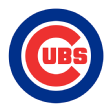 Chicago Cubs: Rick Wilkins (1993)
Chicago Cubs: Rick Wilkins (1993)
Stats: .303/.376/.561, 30 HRs, 73 RBIs, 6.6 WAR
Only 12 catchers have hit .300 with 30 home runs in a season. Mike Piazza did it eight times. Three others — Roy Campanella, Gabby Hartnett and Ivan Rodriguez — are Hall of Famers and others had long and distinguished careers, such as Joe Torre and Javy Lopez. Then there’s Wilkins, who hit .303 with 30 home runs. His 6.6 bWAR ranks tied for 24th all time among catcher seasons — nearly half of Wilkins’ career total of 14.0. The only other season he reached double digits in home runs was 1996, when he hit 14.
Wilkins had shared time in 1992 with Joe Girardi, but when the Rockies selected Girardi in the expansion draft, Wilkins became the starter. He hit just .122 in April, but then heated up, including a monster June during which he hit .414 with eight home runs. His numbers weren’t simply a Wrigley Field mirage, either: He hit .356 and slugged .712 on the road. He did remain in a platoon most of the season — he hit .316 with 27 home runs against righties — but he had appeared to make his mark as one of the top catchers in the game at the age of 26.
The Cubs rewarded him the following spring by renewing his contract — for less than half of what Wilkins was asking for. “I’m just devastated,” Wilkins said at the time. “The way I’ve been treated and handled — it’s just not fair.”
Did that bad blood affect his play? Hard to know. He hit .197 in April and never found that 1993 stroke again, hitting .227 in 1994 and .203 in 1995.
 Cincinnati Reds: Wayne Simpson (1970)
Cincinnati Reds: Wayne Simpson (1970)
Stats: 14-3, 3.02 ERA, 176 IP, 119 SO, 3.0 WAR
Oh, what could have been. In the late ’60s and early ’70s, the Reds’ farm system was churning out a tremendous amount of young talent — Gary Nolan in 1967, Johnny Bench in 1968, and then Dave Concepcion, Hal McRae, Don Gullett, Bernie Carbo and Simpson in 1970. Nolan was still around for the 1975-76 World Series champions, although he had battled injuries along the way. Nolan had posted a 2.58 ERA with 206 strikeouts as a fireballing 19-year-old rookie in 1967, leading the league in strikeouts per nine innings. He strained his shoulder in spring training of 1968, and although he won 110 games in his career, was never really completely healthy again.
Simpson wasn’t even that lucky. He had been the team’s first-round pick in 1967 out of Centennial High School in Compton, California, back when Los Angeles produced numerous African American stars (his American Legion program also produced Roy White, Reggie Smith, Don Wilson, Al Cowens and Lenny Randle around this time). Simpson opened the 1970 season in the Cincinnati rotation at age 21 and spun a two-hit shutout in his first game — starting a remarkable first-half run. After beating the Astros on July 5 with a complete game, he was 13-1 with a 2.27 ERA. He had completed half of his 18 starts, allowed a .177 average — and already tossed 139 innings. Years later, Johnny Bench would say, “Wayne Simpson wore me out; no one threw harder than he did in 1970.” Simpson made the All-Star team.
Just like that, it was gone. On July 31, Simpson heard a sudden pop in his shoulder. He had torn his rotator cuff. I wonder if actually happened earlier than that; Simpson had posted a 6.28 ERA over his previous five starts. Back then a torn rotator cuff meant trying to pitch through it — and the pain. He would win just 23 more games in the big leagues. Nolan and Simpson would both battle with the Cincinnati front office about the nature of their injuries. A 1972 article in Sports Illustrated mentioned, “Both Gary Nolan and Wayne Simpson were accused of having arm problems more mental than physical.”
Could Simpson have been an all-time great? Perhaps. He clearly had premium stuff, although he didn’t have Nolan’s control. He was also a 21-year-old rookie just learning to harness his velocity. Who knows how many titles the Big Red Machine could have won if Simpson and Nolan had remained healthy.
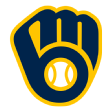 Milwaukee Brewers: Jesus Aguilar (2018)
Milwaukee Brewers: Jesus Aguilar (2018)
Stats: .274/.352/.539, 35 HRs, 108 RBIs, 3.2 WAR
Are there fewer one-hit wonders than there used to be? It seems that way, in part because pitchers are protected better from injury, but perhaps also because there are fewer older players like Aguilar who get a chance to play (2018 was his age-28 season). He’s obviously still active, but after failing to replicate his power numbers in 2019, getting traded to Tampa Bay and now with the Marlins, it looks like Aguilar’s 2018 All-Star season might end up as a career year.
Aguilar had raked for years in the minors and performed well in a part-time role with the Brewers in 2017. The Brewers actually began 2018 with four potential first basemen on the roster, however: Ryan Braun started the first two games of the season, although that experiment was quickly abandoned; Eric Thames and Aguilar were in a platoon; and Ji-Man Choi was around and eventually traded. Aguilar started just seven games in April, but like others on this list, he caught a break to get into the lineup on a regular basis. Thames got hurt and Aguilar got hot at the right time, hitting 18 home runs in May and June. He made the All-Star team, participated in the Home Run Derby and became the toast of Milwaukee, never to be forgotten.
 Pittsburgh Pirates: Evan Meek (2010)
Pittsburgh Pirates: Evan Meek (2010)
Stats: 5-4, 2.14 ERA, 4 saves, 80 IP, 70 SO, 2.4 WAR
If Pirates fans think they have it rough now, well, they don’t have to look back too far for an even darker period of Pirates history. From 1993 through 2012, the franchise suffered 20 consecutive losing seasons. In most of those years, they didn’t sniff .500. They did a bunch of silly things in those days. In 2001, they drafted the NCAA home run leader with their first-round pick — and said he would be a pitcher. He went 2-13 in his big league career. The next year, with the first overall pick, they drafted a pitcher they said could someday be their No. 3 starter. He went 1-9 in the majors. In 2007, they created a stir when they drafted Clemson starter Daniel Moskos over Matt Wieters to save money — and then announced Moskos would be a reliever. He pitched 24 innings in the majors.
But every team needs an All-Star representative. One year it was closer Mike Williams, who had a 6.44 ERA at the time. Ed Sprague made it in a season he would be worth 0.2 WAR. In 2010, it was Meek, a second-year reliever who wasn’t even the team’s closer. He might qualify as the most anonymous All-Star of the entire decade, as he would pitch just 196 career innings. To be fair, he did have a very good season and had a 1.11 ERA in the first half. He threw 95 mph and batters hit just .185 off him, but in 2011 he suffered a shoulder injury and was never the same again. He did have one last moment of infamy: The final pitch he threw in the big leagues was Derek Jeter’s final at-bat at Yankee Stadium, a walk-off base hit in the ninth inning.
 St. Louis Cardinals: Kent Bottenfield (1999)
St. Louis Cardinals: Kent Bottenfield (1999)
Stats: 18-7, 3.97 ERA, 190⅓ IP, 124 SO, 3.2 WAR
Bottenfield was a chunky right-hander who first reached the majors with the Expos in 1992, when Montreal was gushing out prospects like a Saudi Arabian oil well. He wasn’t overpowering and quickly moved on — to the Rockies, Giants and Cubs before landing in the St. Louis bullpen in 1998. He moved into the rotation in 1999, won his first four starts and by the All-Star break led the National League with 14 wins. He made the All-Star Game, held that year at Fenway Park, and he faced five Hall of Famers in his one inning — Jim Thome, Cal Ripken, Ivan Rodriguez, Roberto Alomar and Derek Jeter, plus Rafael Palmeiro and Kenny Lofton. That’s a memory of a lifetime, even if he did allow two runs.
Bottenfield lasted just two more years in the majors, but the Cardinals reaped many more benefits from him. Cashing in on his career season, in March of 2000 the Cardinals traded him and Adam Kennedy to the Angels for Jim Edmonds, who helped them reach the 2004 World Series and win it in 2006. Edmonds was later traded for David Freese, the World Series hero of 2011. Freese was traded for Randal Grichuk, who helped out for a few seasons. Bottenfield became the longtime coach at Palm Beach Atlantic University in Florida.
NL West
 Arizona Diamondbacks: Junior Spivey (2002)
Arizona Diamondbacks: Junior Spivey (2002)
Stats: .301, 16 HRs, 78 RBIs, 103 runs, 3.9 WAR
A 36th-round pick out of a Kansas community college, Spivey reached the majors in 2001 at age 26, but with Tony Womack and Craig Counsell on the big league roster to play second base, he appeared destined for more time at Triple-A Tucson for 2002. Indeed, he was pictured on the cover of the Sidewinders’ pocket schedule. Instead, Jay Bell and Matt Williams got hurt in spring training, Spivey made the team and then made the All-Star team, alongside more famous teammates Randy Johnson, Curt Schilling, Luis Gonzalez and Byung-Hyun Kim. Spivey battled injuries in 2003, was dealt to the Brewers as part of the Richie Sexson trade after that season, and then went to the Nationals in 2005 — his final season in the majors.
As with many others here, injuries no doubt played a part in why Spivey was unable to repeat his 2002 season. It was also the perfect storm for a fluke season: a late bloomer who caught a break to get into the lineup in the first place and had that season at 27, the most common age for a career year. He also had a hot start before the league adjusted to him, with a .966 OPS in the first half compared to .763 in the second half. Still, he will always be able to call himself an All-Star.
 Colorado Rockies: Marvin Freeman (1994)
Colorado Rockies: Marvin Freeman (1994)
Stats: 10-2, 2.80 ERA, 112⅔ IP, 67 SO, 4.5 WAR
Freeman was a 6-foot-7 right-hander with a sinking fastball, slider and a split-finger or changeup, more of a finesse guy than you might expect from someone his size. His career ERA was 4.64 and his career WAR 6.5, but he had one enchanted season in Denver — his 2.80 ERA remains the franchise record. He finished fourth in the NL Cy Young voting and his park-adjusted ERA+ of 179 is tied for 13th best of the decade. Those in front of him: Greg Maddux, Pedro Martinez, Roger Clemens, Kevin Brown and Randy Johnson. Then Marvin Freeman, just ahead of three other Clemens seasons.
Freeman’s season was even more remarkable since he hadn’t started a game since 1990. With the Braves in 1993, he pitched 21 games in relief, posting a 6.08 ERA and getting released after the season. The Rockies, then in their second season and still playing at Mile High Stadium, signed him. He got a chance to start when Kent Bottenfield — see above! — injured his hand in spring training. The one thing Freeman did that season better than the rest of his career was throw strikes. He averaged 1.8 walks per nine compared to a career average of 3.8. With runners in scoring position, batters hit just .221 off him. Eight of the 10 home runs he allowed were solo shots, so he survived despite a low strikeout rate.
It didn’t last. He had a 5.89 ERA in 1995, when he battled a sore elbow, then 6.15 in 1996 and his major league career was over. Freeman is active on Twitter and you can check out some highlights he’s posted there, including a Satchel Paige-like hesitation pitch:
Tryna Screw up timing with the “HESITATION PITCH” 😉 #whateverWorks pic.twitter.com/rDSzqHTn8y
— Marvin Freeman (@marvinfreeman84) March 15, 2020
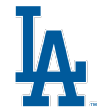 Los Angeles Dodgers: Billy Grabarkewitz (1970)
Los Angeles Dodgers: Billy Grabarkewitz (1970)
Stats: .289/.399/.454, 17 HRs, 84 RBIs, 6.5 WAR
Grabarkewitz was a 24-year-old rookie for the Dodgers in 1970, mostly playing third base while also starting 51 games at shortstop and second base. He even made the All-Star team after a hot start — he was hitting .340 at the end of June — and his two-out single in the bottom of the 12th inning advanced Pete Rose to second base, setting up Rose’s infamous collision at home plate with Ray Fosse after Jim Hickman’s base hit. Grabarkewitz would finish at .289 with 17 home runs — plus 95 walks and 149 strikeouts that spoke to a patient approach at the plate. His 6.5 bWAR ranked fifth among NL position players.
In 1971, he hurt his arm in spring training and later landed on the injured list with a shoulder problem that required surgery after the season. He batted just 90 times. In 1972, he lost the third-base job to Steve Garvey and hit just .167 in a utility role. Traded to the Angels, he scuffled around a few more seasons, finishing with a career batting average of .236. Injuries certainly played a factor in what happened after 1970. “I’ve been X-rayed so much I glow in the dark,” he once quipped.
Would he have been a star minus the injuries? Perhaps, although my gut says probably not. Most 24-year-old rookies do not turn into big stars. He had hit just .264 for Spokane in 1969, without much power. He did have patience, but in his big season he benefited from a .368 BABIP. Plus, Ron Cey was about to arrive and Cey was a star. But who knows, maybe the famous Dodgers infield of the 1970s would have included Grabarkewitz instead of Garvey.
 San Diego Padres: Cito Gaston (1970)
San Diego Padres: Cito Gaston (1970)
Stats: .318/.364/.543, 29 HRs, 93 RBIs, 5.1 WAR
Gaston’s biggest claim to fame came as manager of the World Series champion Blue Jays in 1992 and 1993, but he has another, more obscure claim: one of the greatest fluke seasons in major league history. Put it this way: His career WAR was minus-0.8 — despite having this one remarkable, 5-win season. He hit .256/.298/.397 in an 11-year career, with 32% of his career home runs and 24% of his career RBIs coming in 1970.
The Padres had selected Gaston from the Braves organization in the 1968 expansion draft and he hit .230 as a rookie, finishing with the third-highest strikeout rate in the NL. He walked just 24 times versus 117 strikeouts, so his plate discipline wasn’t exactly Ted Williams-esque. It wasn’t much better in 1970, as he finished with 142 strikeouts and 41 walks, but he hit .318 thanks to a .378 BABIP that ranked third behind only Roberto Clemente and Bobby Bonds (Grabarkewitz was fourth). Gaston had power, but his poor approach led to low batting averages and low OBP figures.
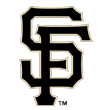 San Francisco Giants: Dick Dietz (1970)
San Francisco Giants: Dick Dietz (1970)
Stats: .300/.426/.515, 22 HRs, 107 RBIs, 4.5 WAR
So what was going on in the NL West in 1970? This is fourth player from 1970 to make this list, all from the same division, all four All-Stars that season. (Yes, kids, the Reds were in the NL West, which is a whole different wacky story.) First off, 1970 was a weird season, a rabbit-ball season comparable to 2019. Check out runs per game in the NL:
1969: 4.05
1970: 4.52
1971: 3.91
That 4.52 figure matches the famous rabbit-ball year of 1987 as the highest per-game average in the NL between 1962 and 1993. Dietz took advantage of a high-offense year, but his 153 OPS+ still ranks as the third best for a catcher in the decade, behind just Johnny Bench and Carlton Fisk, both in 1972. It was a monster offensive season, which included 109 walks and 36 doubles, kind of a Yasmani Grandal season except with 50 more points of batting average. Three years later, Dietz was out of baseball — even after posting a .474 OBP in a part-time role with the Braves in 1973. The only player with a higher OBP in his final season (minimum 150 plate appearances) is Barry Bonds.
So what’s the story? Dietz, who died in 2005, would say he was blackballed. It’s not a stretch. He followed up 1970 with another solid season in 1971, not quite as good, but the Giants won the division title. Dietz wasn’t a great defensive catcher, having led the league in passed balls in both 1970 and 1971, with a below-average caught stealing rate. More important to the Giants and owner Horace Stoneham: Dietz was the Giants’ player rep in the then-emerging union. The players went on strike in 1972, wiping out the beginning of the season. On April 12, three days before the start of the season, the Giants placed Dietz on waivers.
Former Giants pitcher John D’Acquisto wrote on a blog a few years ago, “I believe most of the player union reps had problems if they were on the fringe. Owners couldn’t mess with stars, just the fringe player.” Dietz wasn’t a star, but he was more than a fringe player. But D’Acquisto was right: Four other player reps were released and five others were traded within a year, most of them fringe-type players.
The Dodgers did pick up Dietz and he served as a backup in 1972. He hit .161 in 27 games before breaking his wrist. He went to the Braves in 1973, playing more first base than catcher in a reserve role. He was back in spring training with the Braves in 1974, but they cut him in late March and nobody picked him up, his career over at age 32.
